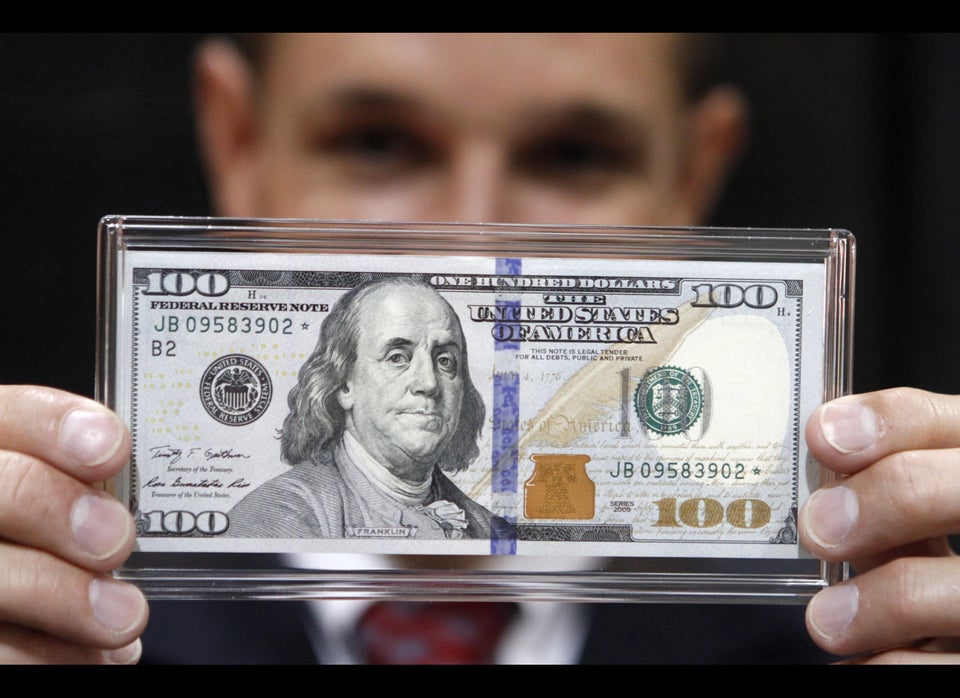Ben Bernanke just can't stop finding good things to say about the economy. He'll make them up if he has to.
The Federal Reserve chairman, appearing Wednesday before the House Financial Services Committee to deliver a semi-annual report on monetary policy, was asked about the fact that interest rates have soared in recent weeks and whether we should be just a little nervous about that, given the effect it could have on housing and the broader economy.
Bernanke expressed only mild worry, saying it was first a function of an improving economy and downplaying his own major role in sparking the worst bond-market sell-off in generations.
Interest rates have pretty plainly been driven higher by Bernanke and other Fed officials warning repeatedly that they could in the next couple of months start to taper their program to buy $85 billion in mortgage and Treasury bonds to keep rates low.
The surge in interest rates took the yield on the 10-year Treasury note from about 1.6 percent to about 2.7 percent, the most violent move in rates in decades. This had a direct impact on mortgage rates, pushing the average fixed-rate 30-year mortgage rate from a record-low 3.3 percent to 4.5 percent.
In other words, in warning the market that it was going to cut back on its program to keep interest rates low, the Fed made interest rates go higher. Kind of makes sense, yes?
Not to Ben Bernanke! He has expressed confusion about the market's reaction, and he admits it is troubling and needs watching.
"Mortgage rates remain relatively low, but are higher than they were, and we do have to monitor that," Bernanke said.
He also threw a bone to the bond market, saying the Fed's plan to taper was not "preset," acknowledging that he may have to keep the stimulus flowing in part to make up for some of the damage he has done.
But Bernanke doesn't want to take all the blame for the jump in rates, understandably. The first reason for higher rates, he claimed on Wednesday, is that the economic news "has been a little better." He pointed to "a pretty strong labor market report that caused yields to go up as investors became more optimistic."
There was a "pretty strong" job-market report in early May, and rates did rise a tiny bit on that day. But ever since that early May report, the Fed has been chattering about tapering its bond purchases, making the effect of stronger economic data harder to pick out.
At the same time, the economic data have actually gotten a little bit worse in the months since that report, in every area besides employment. GDP grew at an anemic 1.8 percent annualized rate in the first quarter, and probably slowed to a 1 percent pace in the second quarter, many economists estimate. Manufacturing has slowed down. The jump in interest rates has hurt demand for mortgages.
Even employment isn't in such great shape -- the unemployment rate has actually risen by a tick, to 7.6 percent from 7.5 percent, and new weekly claims for unemployment benefits have risen, as the Wall Street Journal's Justin Lahart points out (subscription only).
Bernanke does admit that "probably" some "excessively risky or leveraged positions unwound in the last month or two as the Federal Reserve communicated about policy plans." But he also thinks this is a good thing, because maybe it avoided dangerous bubbles, who knows?
That's possibly true. But the more Bernanke talks about how great the economy is doing, the less connected from reality he appears. Lahart says Bernanke risks looking like Little Orphan Annie, always expecting the sun to come out tomorrow. Other acceptable comparisons include Pollyanna or Pangloss: He is already giving the economy way too much credit.
